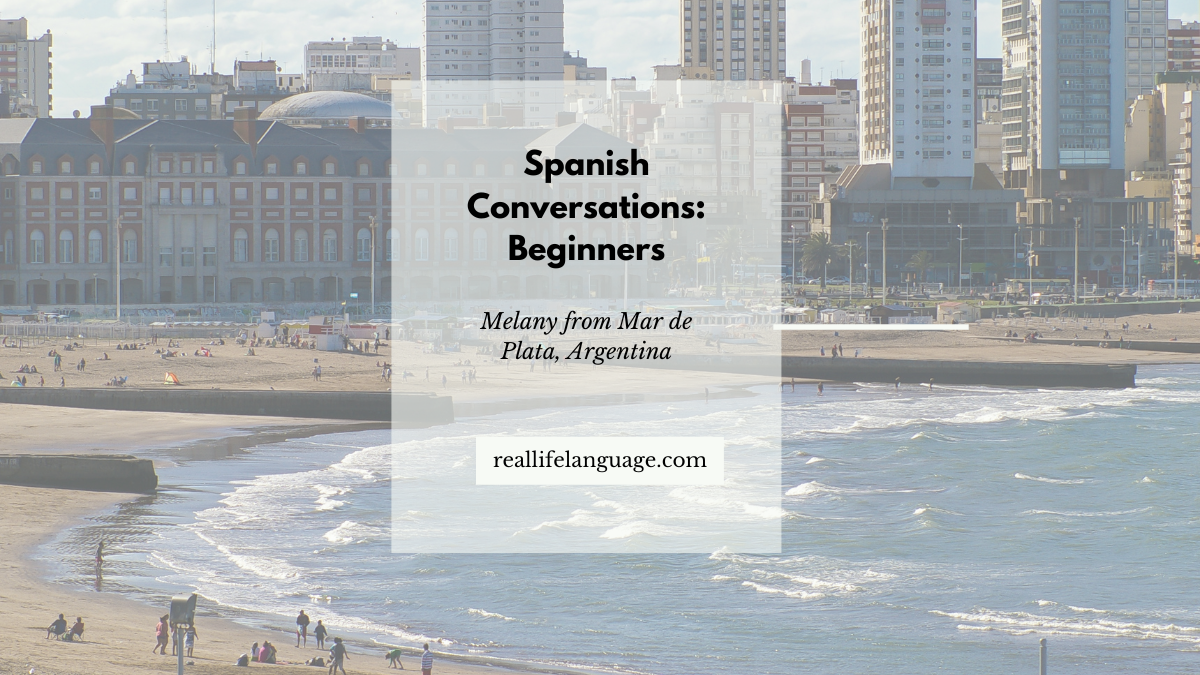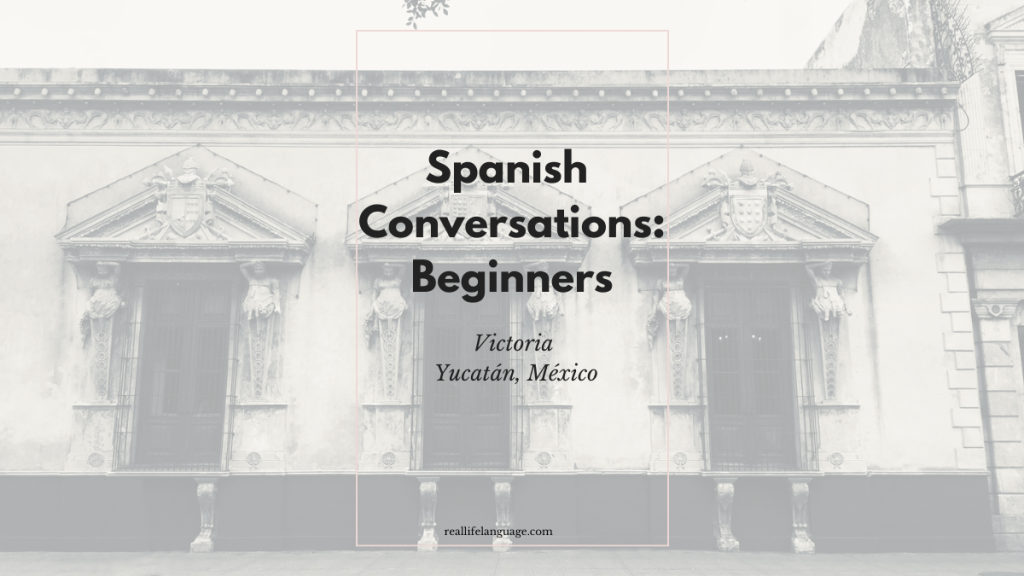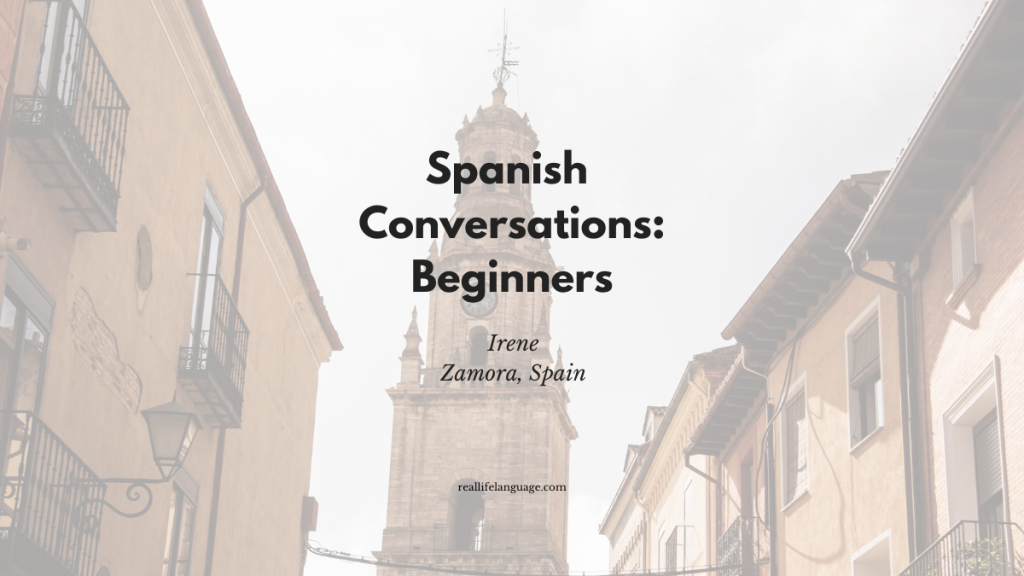 This article accompanies a conversational video features Melany, a Spanish teacher from Mar del Plata, Argentina. It is designed to help learners to learn Spanish by exposing them to natural, everyday speech, practical vocabulary and useful phrases. If the goal is to learn Spanish through short dialogues and real-life details, this guide collects the most useful language points and practice ideas from Melany’s conversation.
This article accompanies a conversational video features Melany, a Spanish teacher from Mar del Plata, Argentina. It is designed to help learners to learn Spanish by exposing them to natural, everyday speech, practical vocabulary and useful phrases. If the goal is to learn Spanish through short dialogues and real-life details, this guide collects the most useful language points and practice ideas from Melany’s conversation.
Overview: Who is Melany?
Melany is a Spanish teacher from Mar del Plata who travels frequently. She describes her family, daily life, hobbies and routines in clear, everyday Spanish. Her speech includes common vocabulary for family, appearance, routines and culture—great material for beginners and intermediate learners who want examples of natural phrasing.
Family & Personal Details — Key Vocabulary
Melany talks about her family and pets, which gives learners simple, high-frequency nouns and verbs to practise. Useful words from this section:
- la familia — the family
- hermana / hermano — sister / brother
- sobrina / sobrino — niece / nephew
- perro — dog
- cumpleaños — birthday
- nací en… — I was born in…
Example phrase: Tengo dos hermanas. — I have two sisters.
Appearance & Personality Phrases
When describing herself, Melany uses basic adjectives and simple sentence structures that learners can mimic:
- pelo castaño — brown hair
- ojos marrones / castaños — brown eyes
- alta / baja — tall / short
- delgada — thin
- extrovertida — outgoing
- curiosa — curious
Practice sentence: Soy extrovertida y me gusta viajar. — I am outgoing and I like to travel.
Languages & Cultural Notes
Melany speaks Spanish and English fluently and knows some Italian. This section provides phrases to talk about languages:
- Hablo español e inglés. — I speak Spanish and English.
- Un poco de italiano. — A little Italian.
- Mi familia es de origen italiano. — My family has Italian roots.
Daily Routine — Useful Verbs and Time Phrases
Her daily routine is full of everyday verbs and time markers that beginners should learn and practice aloud:
- Me despierto — I wake up
- Desayuno — I have breakfast
- Leo — I read
- Hago yoga / medito — I do yoga / I meditate
- Trabajo hasta las cinco o seis — I work until five or six
- Meriendo — I have a snack
- Ceno — I have dinner
- Me acuesto — I go to bed
Sentence to practise: Me levanto a las siete y media y hago yoga una hora.
These verbs and time phrases are great conversational building blocks when learners want to describe routines and habits.
Summer, Holidays & Travel Vocabulary
Melany recounts summer activities that include common leisure verbs and nouns:
- ir a la playa — go to the beach
- nadar en el mar — swim in the sea
- fiestas en la playa — beach parties
- leer en la plaza — read in the square
- vacaciones de verano — summer holidays (December–February in Argentina)
Food & Culture — Phrases to Remember
Food is central to cultural conversation. Melany mentions pizza and the Argentine asado (barbecue). Useful lines:
- Mi comida favorita es la pizza. — My favourite food is pizza.
- El asado es típico en Argentina. — The asado is typical in Argentina.
- Carne a la parrilla — grilled meat
Tip: practise describing dishes: Es carne cocinada a fuego lento y tiene sabor ahumado.
Shopping, Sports & Hobbies
Practical language appears when Melany discusses shopping (tarjeta vs efectivo), sports and hobbies. Key phrases:
- ¿Aceptan tarjetas? — Do you accept cards?
- Pagar en efectivo — pay with cash
- El deporte más popular es el fútbol. — The most popular sport is football.
- Me gusta leer, escribir y pasear. — I like reading, writing and walking.
House, City & Climate
Melany describes her apartment and city—useful for learners who want to talk about where they live:
- un apartamento pequeño — a small apartment
- luminoso — bright
- viento del Atlántico — wind from the Atlantic
- hace calor / hace frío — it’s hot / it’s cold
Practical Phrases and Practice Activities
To use this content and really learn Spanish, learners should practise aloud, shadow Melany’s sentences, and write short answers about themselves using the same templates. A simple exercise sequence:
- Listen and repeat short sentences (30–60 seconds each).
- Answer basic questions in Spanish: ¿Cómo te llamas?, ¿De dónde eres?, ¿Qué haces los fines de semana?
- Write a 50–100 word paragraph about daily routine using the verbs above.
- Record yourself describing your city and compare pronunciation.
Sample starter sentences to personalise:
- Me llamo…
- Vivo en…
- Trabajo/estudio en…
- En mis vacaciones me gusta…
Conclusion
Melany’s conversation is an excellent resource for beginners who want to learn Spanish with authentic, everyday content. By studying her descriptions of family, routine, food and city life, learners can collect practical vocabulary and ready-made sentences to use immediately. Practise regularly: listen, repeat, write and speak—these steps make the language stick.
100s of videos to learn Spanish:
https://real-life-language.kit.com/b1531a6404
Learn Spanish with Everyday Conversations: Shopping, Sports and Family Life from Medellín

